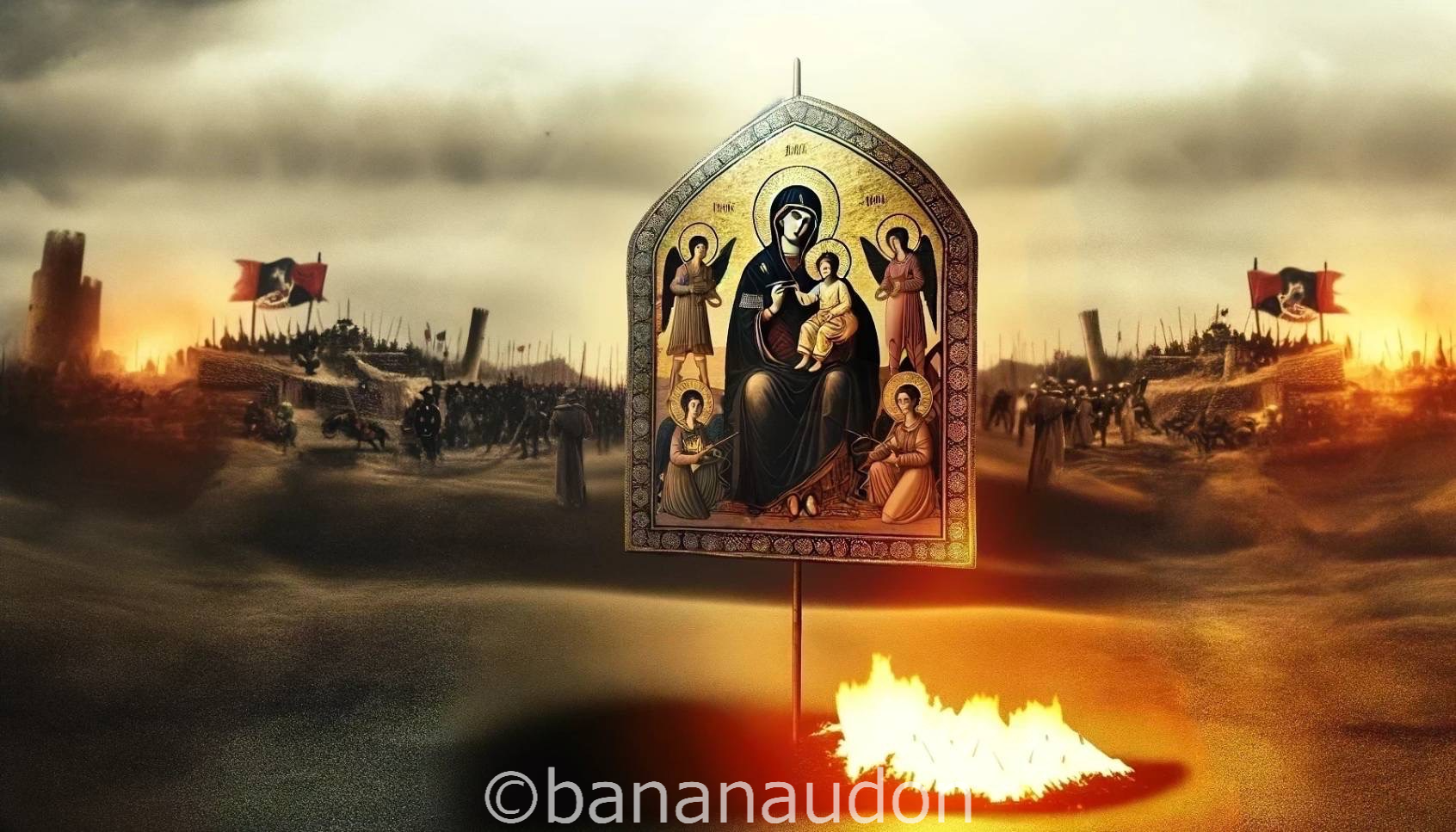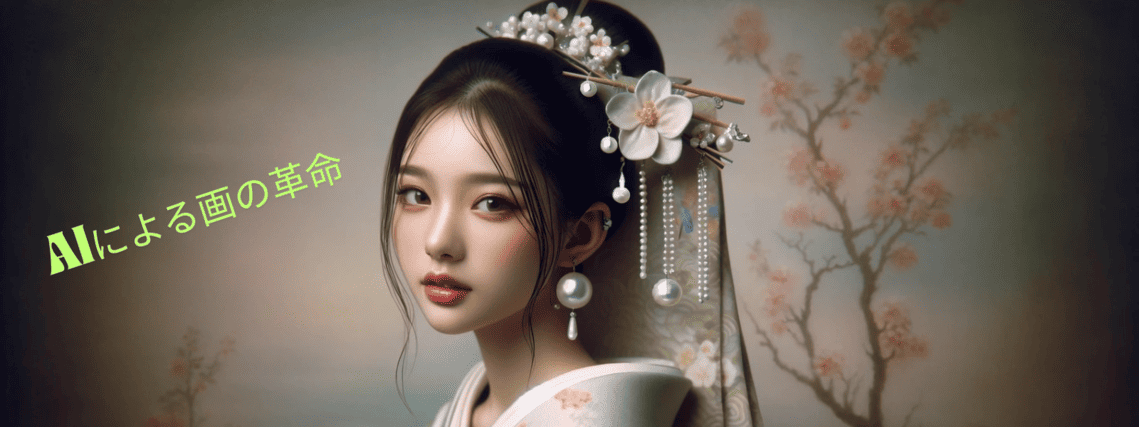Reinterpreting Cimabue’s “Madonna Enthroned”: A Sacred Symbol Raised on the Battlefield
2025.02.03投稿
広告

The “Madonna Enthroned” is a widely revered religious painting from medieval Europe.
In this reinterpretation, however, the Madonna and Child are raised at the heart of the battlefield, depicting a scene in which faith is put to the test.
This article explores the history of Cimabue’s masterpiece and examines the profound message carried by this reinterpretation.
Initial Impressions and Thoughts
This reinterpretation portrays the “Madonna Enthroned” placed directly in the midst of a battlefield.
In the background, we see scenes of medieval warfare: troops surrounding city walls and flags fluttering, conveying the tension of combat.
At the centre, the Madonna and Child are solemnly displayed, with flames blazing before them.
The stark contrast between a traditional religious painting and a battlefield compels us to consider how faith was utilised and what significance it held.
Does a sacred presence become a tool of war, or does it serve as a symbol of salvation within chaos?
Its interpretation is left to the viewer.
Background of the Original “Madonna Enthroned”
This reinterpretation is based on the work by Cimabue (Cimabue):
“Madonna Enthroned” (Maestà, Madonna Enthroned).
Basic Information About the Masterpiece
- Title: Madonna Enthroned (Maestà, Madonna Enthroned)
- Artist: Cimabue (Cimabue)
- Date: Around 1280
- Style: Transitional period from the Byzantine style to the Gothic style
- Main Characteristics:
- Emphasis on sanctity through a gold background
- The Virgin Mary and the Christ Child seated on a throne
- Angels arranged symmetrically on either side
- A strict composition, yet featuring human-like expressions and softer forms
Historical Background of the Masterpiece
While inheriting the strict style of Byzantine art, Cimabue pursued new modes of expression for an evolving era.
“Madonna Enthroned” differs from the rigid Byzantine icons of the time, presenting a gentler expression and a sense of depth.
This piece influenced Giotto and Duccio, serving as a bridge to Renaissance painting.
Moreover, in medieval Europe, images of the Madonna and Child were sometimes displayed on battlefields or in the defence of cities.
It was not uncommon for religious icons to be raised to boost troop morale or to seek divine protection.
Key Points of the Reinterpretation
In this reinterpretation, placing the “Madonna Enthroned” on a battlefield adds new significance to the work.
1. Change of Setting
- Originally, the “Madonna Enthroned” was depicted in a gilded, sacred space.
In this reinterpretation, however, it is set within a bleak battlefield landscape. - This suggests that, in the medieval period, religious paintings were not simply objects of prayer, but could also function as tools for war and politics.
2. The Symbolism of Fire
- The flames burning before the Madonna and Child evoke a trial of faith and religious persecution such as the Inquisition.
- Fire also symbolises purification, implying that faith is tested amid the chaos of war.
3. The Relationship Between War and Faith
- The Madonna and Child raised on the battlefield is not merely an object of worship, but can also be seen as a symbol of “justification for war” or “divine protection”.
- During the Crusades and medieval warfare, such religious icons were sometimes used to bolster soldiers’ morale.
Analysis
This piece questions how faith operates within the context of war.
Religion holds the power to bring peace to people, yet it has also been used to justify warfare.
Placing the “Madonna Enthroned” at the centre of the battlefield seems to symbolise the duality of faith.
The Madonna and Child illuminated by the flames: do they remain a sacred presence amid destruction, or do they become casualties of war?
The interpretation can vary depending on the viewer’s perspective.
Concluding Remarks
This reinterpretation prompts us to reconsider how a religious painting such as the “Madonna Enthroned” functioned, not merely as a symbol of faith but throughout history.
Placed amid the chaos of the battlefield, the Madonna and Child highlight both the universal value of faith and the ways it can be employed.
While preserving the sacred aura of Cimabue’s original work, transplanting it into a different context
creates a new interpretation.
The interplay of faith and war, worship and destruction, stands out powerfully in this piece, reminding us of the profound impact of art.
